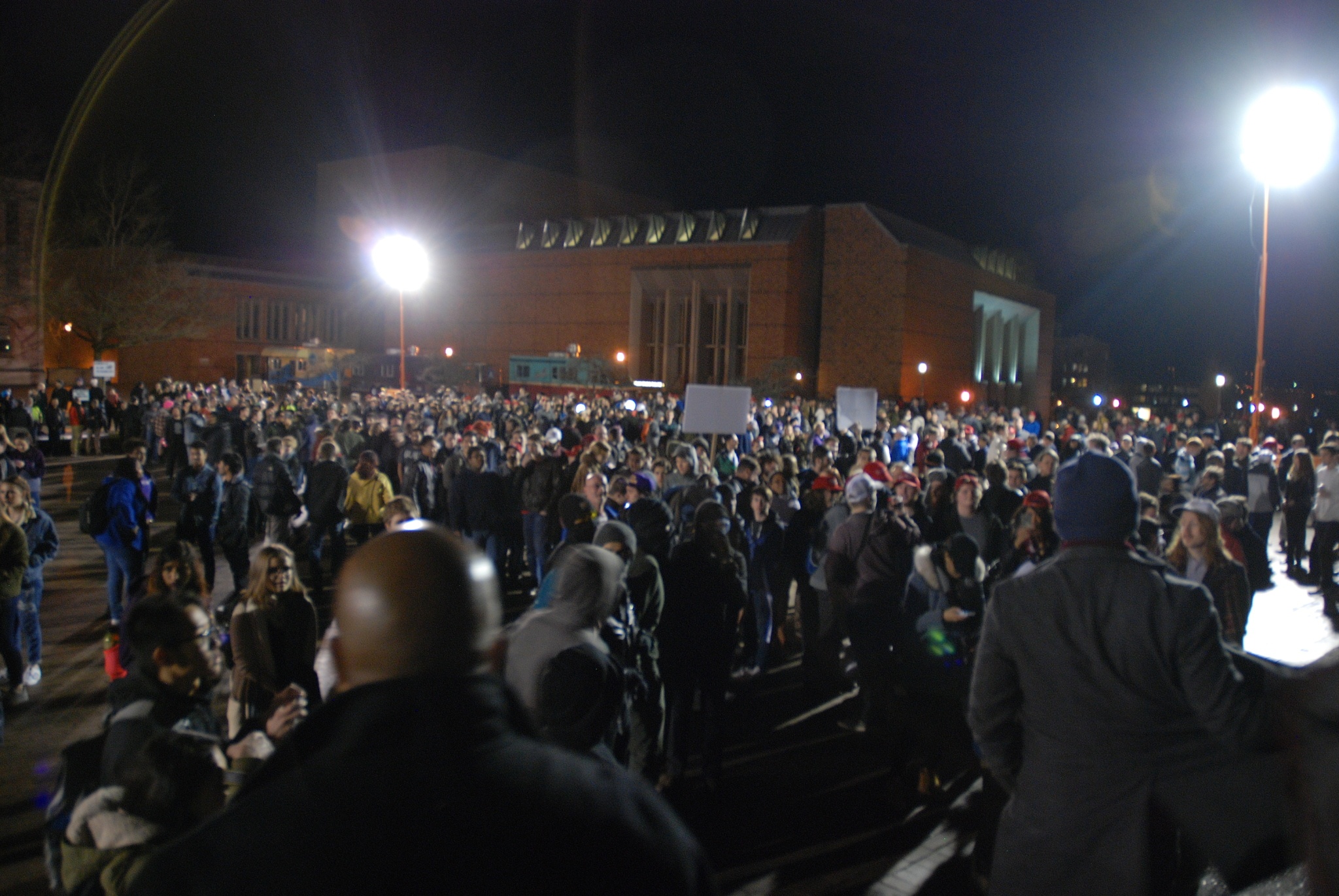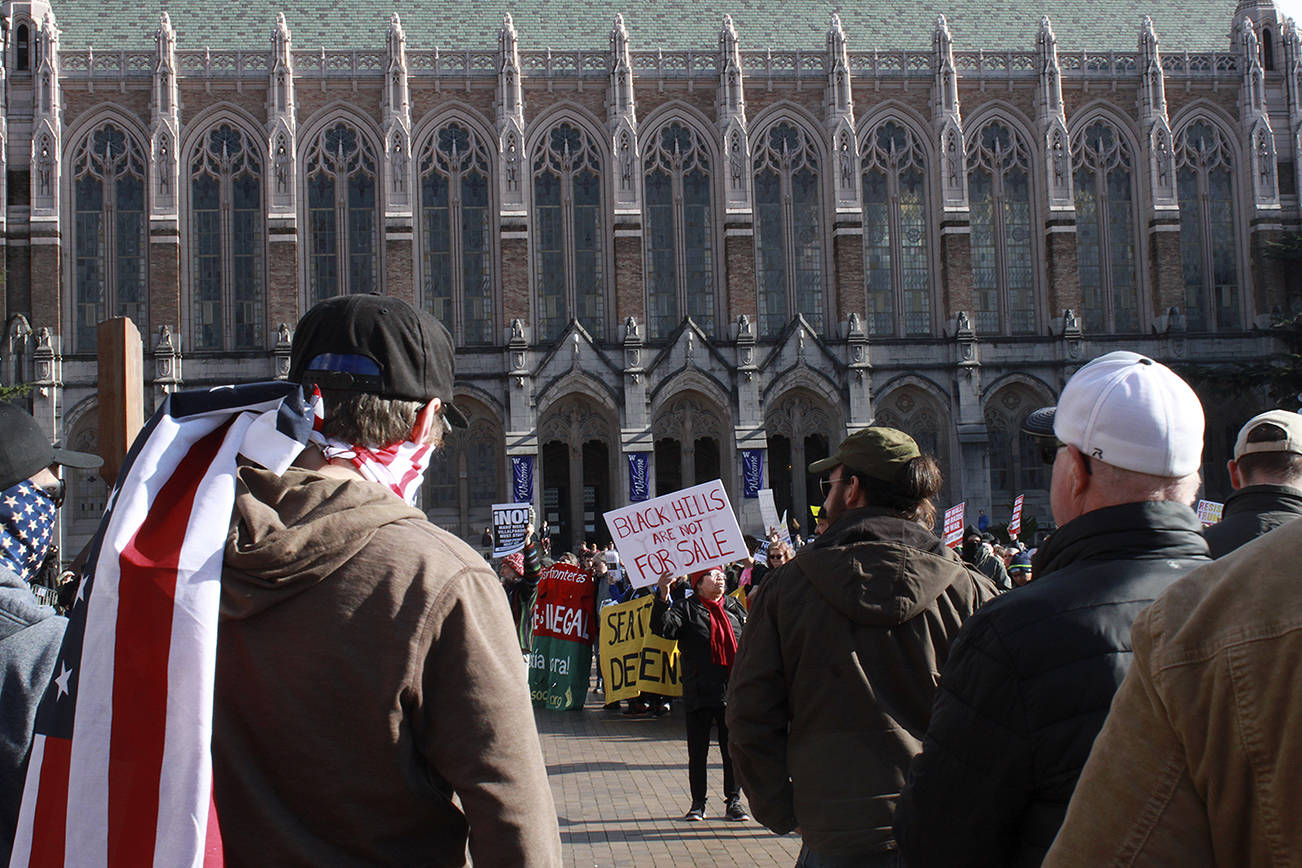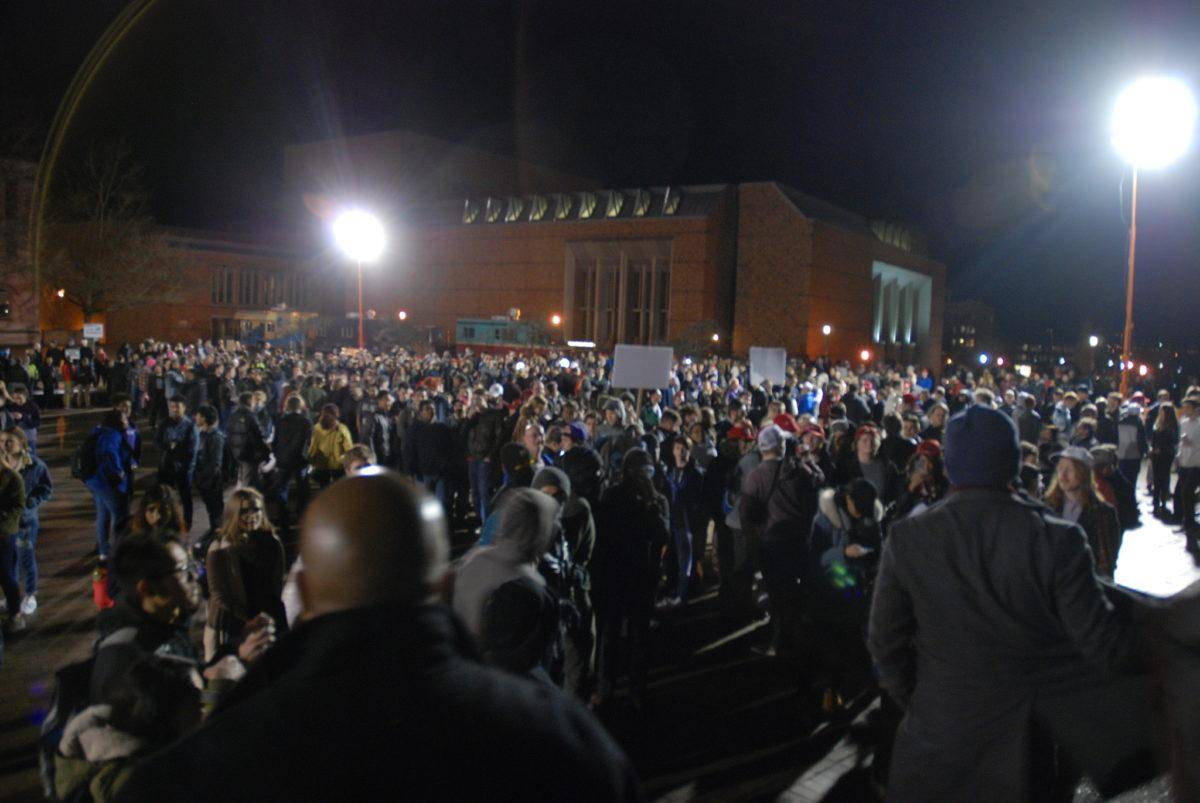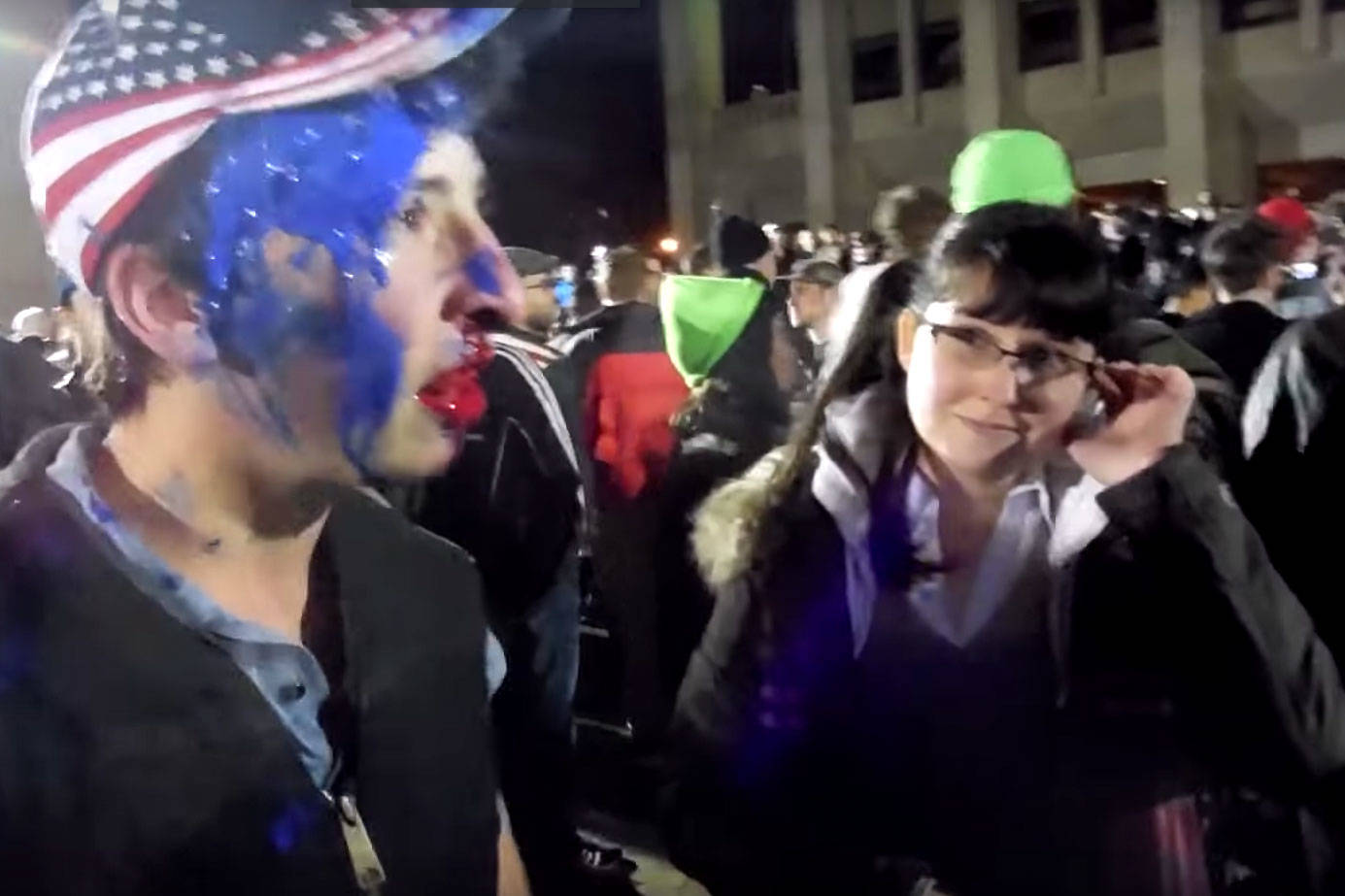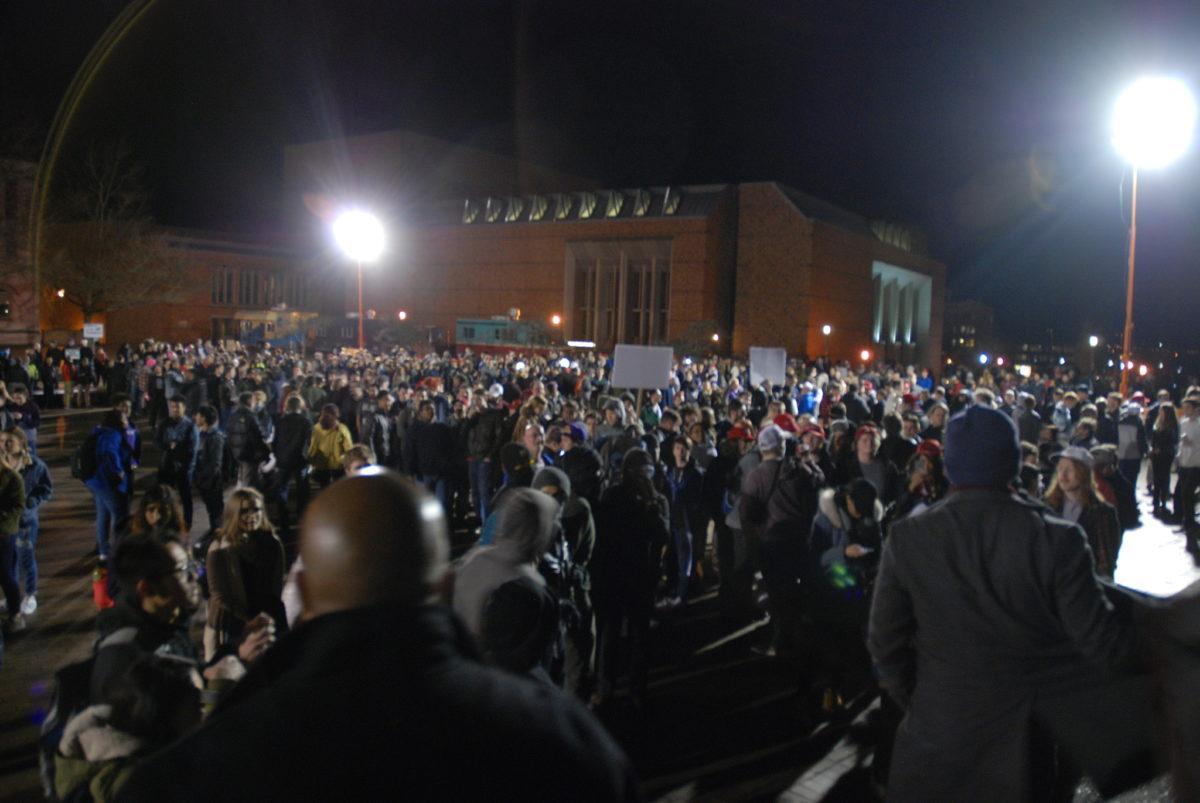Of all the evidence that could be uncovered throughout the ongoing investigation of last month’s Red Square shooting, it is doubtful any of it will come from the suspect’s phone. That became clear earlier this week when a publicly available search warrant, naming Marc Kolekona Hokoana and his wife Elizabeth, showed that police found the phone’s data completely wiped clean “through a factory reset of some sort,” according to police records.
However, while the suspect’s own phone may not provide any insight into what happened that chaotic night, other people’s phones might, as police continue to sift through video captured by people who were near the incident, in which University of Washington student Marc or his wife Elizabeth are suspected of shooting a protester during the chaotic events outside a Jan. 20 lecture given by alt-right commentator Milo Yiannopoulos.
Some of the videos are already starting to filter into the public. One YouTube video appears to capture the UW shooting suspects talking on the night of the shooting, a portion of their conversation audible (the whole series of interactions can be seen between about 3:30 and 3:50 in the video). Elizabeth Hokoana can first be seen at the top left corner of the recording, facing away from the camera in a dark brown jacket with a fur hood and brunette pigtails. Marc Hokoana then approaches her in what appears to be a grey or brown leather jacket. Marc is seen several times throughout the video, smiling and clearly amped up. In the video, Marc makes reference to a possible confrontation with the protesters. “They have to start it! They have to start it!” he tells someone else in his crowd.
Witnesses of the shooting, which left the victim in critical condition, continue to come forward with video footage, but it is Marc or Elizabeth who might have captured the most telling evidence via text messages, videos, photos, or social media—all information that may have been destroyed when the phone in question was cleared. Previous articles have indicated that Hokoana had gone on Facebook shortly before the shooting in hopes of contacting Yiannopoulos, of whom he is a fan.
Marc’s phone, seized by police, is a Samsung Note 7. There are several ways its data could have been cleared. The user could have brought the phone into a cell phone vendor store; done it themselves by hand; or, since it is an Android device, they could have remotely erased the data through an Android device manager website.
Any of those options were a possibility, since Marc and Elizabeth did not turn themselves in for hours. When they did, police took the phone, but it sat at UWPD for four days before a search warrant was issued.
When asked why the UWPD-issued warrant was filed days after the suspects turned themselves in, rather than as soon as possible, UWPD Major Steve Rittereiser said, “I honestly don’t know.” However, the apparent lag would have been only one day. The warrant was signed Jan. 24, a Tuesday, when the incident happened late Friday night, and the court isn’t open on weekends. Asked whether clearing the phone could be considered tampering with evidence, Rittereiser said it was too soon to tell. “I imagine investigators closer to the action are forming some opinion on that. but we’re just no quite there yet,” he said.
University of Washington students have been dealing with doxing, dangerous encounters, and general transphobia or racism since the incident. The UW administration, as a result, has been under scrutiny and inundated, ping-ponging students between offices.
Despite reports to the contrary, Marc is a student registered at UW. His name was gathered through an Internet trail left by an article by The Seattle Times, and was plugged into the UW Directory on Jan. 29, where his name came back as a registered undergraduate senior. Marc’s name has since been taken down from the UW Directory. Enrolled students have the right to remove their name from the directory at any time.
The UW administration has yet to launch an investigation of Marc, despite the fact that bringing a firearm onto campus violates the Student Conduct Code.
The shooting victim, a 34-year-old who isn’t a UW student, has since undergone multiple emergency surgeries at Harborview Medical Center, and almost died two weeks ago. He wishes to remain unnamed as he recovers from his injuries and fears further harassment. [Ed. note: The Seattle Times has named the victim, but Seattle Weekly is choosing to honor his request.]
“[The victim] has decided that there’s been a lot of complications and it’s not time to engage in the media right now,” explained his attorney, Sarah Lippek. “He needs time to heal. Every time he has too many visitors, something goes wrong.”
While the incident has increased fear and frustration on campus, Rittereiser said that UWPD has not felt more pressured with this case.
Rittereiser says the investigation is going as quickly as possible, and says he understands the concerns of students.
“We try to give personal responses to each person who has a question,” Rittereiser said. “Most of the time, there’s just some concern we need to communicate with them about certain things, like whether or not it’s illegal to bring a gun on campus. In other situations, people just want to understand why it takes so long.”
Investigations clearly don’t happen as quickly as they would on television, and there are good reasons why. For one, formalities like warrants can take some time. Forensic evidence, once collected, also takes far longer to process than obtaining a warrant. Analysis and video compiling also takes some time.
Currently, evidence is being processed by the Washington State Patrol Crime Lab. Detectives have been combing through videos found and sent in, time-stamping each segment to create a chronological sequence of events from various camera angles. A private video technician has also been hired by UWPD for additional expertise.
“By now, we’ve looked at most of them [the videos],” Rittereiser said. “You kind of go through them again and again — for or five times, maybe more—just to make sure you understand some of the elements of what’s going on.”
UWPD is still anticipating people to send in more videos, because they can see a lot of cameras and phones operating within the videos they already have.
“We seem to think there’s more people that could potentially send us stuff that could be pretty important,” Rittereiser noted. “It’s more of a collection of all the angles, and all the opportunities to see things. Like a football game, for how many times a camera takes a look at the replay, sometimes those angles change your mind about what happened.”
If anyone wishes to send in a video or contact UWPD, the department can be reached through tip hotlines at (206) 685-8477, by phone at (206) 685-8973, or online.
Clarification This story has been edited to clarify the nature of the Student Conduct Code.
